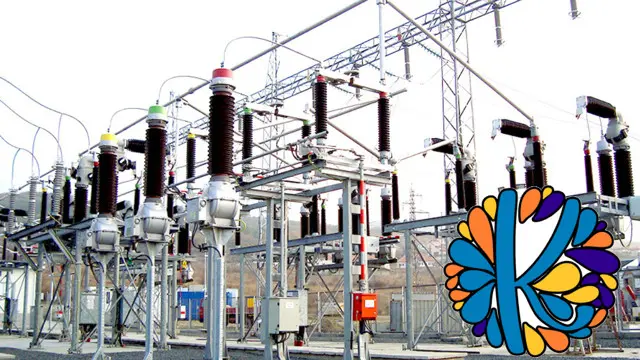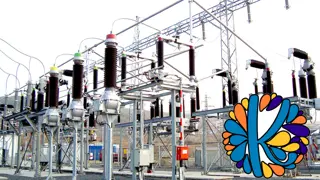
Electricity Generation, HV, and Substations Bundle
This electrical engineering bundle consists of electrical substation, high voltage, and electricity generation courses
Khadija Academy
Summary
- Reed courses certificate of completion - Free
- Tutor is available to students
Add to basket or enquire
Overview
"Ultimate Electricity Generation, HV, and Substations Bundle"
This electrical engineering bundle consists of electrical substations, high voltage, and electricity generation courses.
Curriculum
-
Course Content 32:49
-
Introduction to Electricity Generation 1:56:58
-
Hydroelectric Power Plants 39:02
-
Diesel, Fossil Fuel, and Gas Power Plants 49:12
-
Nuclear Power Stations 21:25
-
Geothermal Power Plants 12:11
-
Solar Energy 5:26:05
-
Wind Energy Systems 3:06:03
-
Important Definitions in Generation 46:03
-
High Voltage Generation 3:43:28
-
Electrical Substations 2:30:04
-
Earthing System Design 1:39:38
-
Basics of Electrical Substation Design 54:39
Course media
Description
So what are you going to learn in these courses?
First Course, "Generation Course for Electrical Engineering"
Faraday's law of induction and Lenz’s law.
Synchronous generator working principle and its types.
Wound rotor and squirrel cage induction machines.
Doubly-fed induction generator.
Self-excited induction generator.
Hydroelectric power plant and its types.
Hydraulic head in hydroelectric power plants.
Diesel generators.
Fossil fuel - conventional power plants.
Gas-fired power plant and its types.
Nuclear power plants.
Geothermal power plant and its types.
Capital, operating, and Levelized costs for power plants.
Generator characteristics.
Base and peak load power plants.
Types of wind turbines
Rotor solidity and selection of the number of rotor blades
Gearbox in wind turbines
The power extracted by the turbine from the wind
Betz limit and maximum rotor efficiency
Factors affecting wind speed and density
Applied force on the wind turbine, torque coefficient, and the importance of the TSR
Wind turbine generator characteristics
Effect of the rotor diameter and generator size on power
Wind turbines spacing
The fundamentals of solar energy
Components and design of on-grid and off-grid solar systems
Types and selection of solar modules
Types of charge controllers
Types of different solar inverters
Selection of suitable tilt angle and shading effect in PV systems
Second Course, "High Voltage Generation For Electrical Engineering"
Types of high voltages occurring in an electrical system.
Methods used to generate high voltage AC at power frequency.
How to generate high voltage AC at high frequency for simulating switching actions on our electrical equipment.
Definition of impulse waveform in the electrical system.
Methods of generating high voltage impulses to test our equipment.
Different methods used to generate very high DC voltage in electrical systems in addition to voltage doubler circuits and multiplier circuits.
Third Course, "Electrical Substations for Electrical Power Engineering"
Function, classification, and voltage of electrical substations
Main components like power transformers, conductors, insulators, switch gears, current transformers, capacitor voltage transformers, and voltage transformer
Different types of circuit breakers, relays, and their classification according to time, construction, and function
Learn the difference between circuit breaker and fuse, in addition to their applications
Understand the definition of IP or ingress protection
Grounding system including the effect of current on the human body and components of the grounding system
Types of electric hazards and classification of the earthing systems
Measuring the earthing resistance by Megger and the three-point method
Design of an earthing system using the ETAP program
Ring main unit and its importance in the electrical power system
Types of switches used in electrical power systems and substations
Overhead transmission lines, underground cables, and the difference between them
Busbars in the power system, their importance, their different schemes, and how to select them
Lightning arresters and wave traps which are used in substations
Air and gas-insulated substations
Overview of the design of an electrical substation and single line diagram of 66/11 kV substation
Thank you, and hope to see you in our course bundle :)
Who is this course for?
- Anyone who wants to learn about electrical power systems
- Anyone interested in learning about high voltage in the electrical system
- Electrical engineering students especially electrical power engineers interested in learning about high voltage
- Anyone who wants to learn about electrical generating power stations
Requirements
Just Passion and Patience for Learning.
No requirement, only your PC or tablet or mobile for viewing lectures online
Questions and answers
Currently there are no Q&As for this course. Be the first to ask a question.
Certificates
Reed courses certificate of completion
Digital certificate - Included
Will be downloadable when all lectures have been completed
Reviews
Currently there are no reviews for this course. Be the first to leave a review.
Legal information
This course is advertised on reed.co.uk by the Course Provider, whose terms and conditions apply. Purchases are made directly from the Course Provider, and as such, content and materials are supplied by the Course Provider directly. Reed is acting as agent and not reseller in relation to this course. Reed's only responsibility is to facilitate your payment for the course. It is your responsibility to review and agree to the Course Provider's terms and conditions and satisfy yourself as to the suitability of the course you intend to purchase. Reed will not have any responsibility for the content of the course and/or associated materials.


